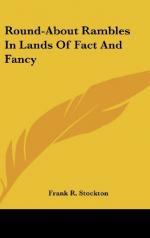[Illustration]
There is a bird—and it is a Flamingo—which builds a nest which looks to me as if it must be very unpleasant to sit upon. And yet it suits the bird very well. In fact, on any other kind of a nest, the flamingo might not know what to do with its legs.
[Illustration]
It would appear as if there had been a waste of material in making such a large high nest, when only two or three moderate-sized eggs are placed in the slight depression at the top; but, when we consider that the flamingo uses this tall affair as a seat, as well as a nest, we can easily understand that flamingoes, like most other birds, understand how to adapt their nests to their own convenience and peculiarities. Sitting astraddle on one of these tall nests, which look something like peach-baskets turned upside down, with her head stuck as far under her wing as she can get it, the flamingo dozes away, during the long sultry hours of day, as comfortably and happily as if she was a little wren snugly curled up inside of its cosey nest. It is not mere situation which makes us happy. Some people enjoy life in cottages, others in palaces, and some birds sit in a pile of hard sticks and think themselves quite as cosey as those which repose upon the softest down.
It is almost impossible to comprehend the different fancies of birds in regard to their nests. For instance, why should any bird want to sail about in its nest? Yet there is one—called the Little Grebe—which builds a water-tight nest, in which she lays her eggs, and, while she is hatching them, she paddles herself around on the water.




